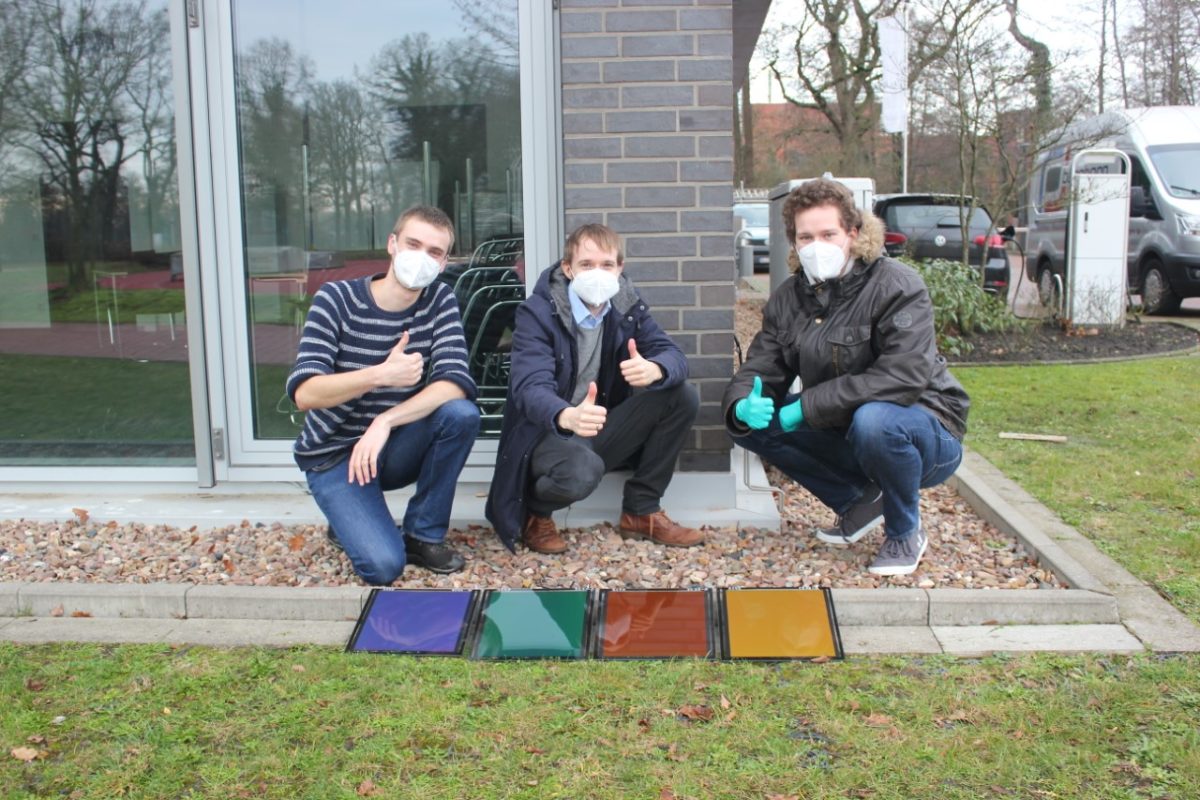A group of scientists in Germany has come up with a new way to refine conventional thin-film panels into building-integrated (BIPV) products. They claim that their approach can reduce production costs, while ensuring supply chain flexibility.
“This approach can not only reduce costs, but also opens up the possibility of separating the production process into the manufacture of semi-finished PV products and their refinement into colored BIPV modules,” they said. “For example, semi-finished PV panels could be produced in Asia and the refinement can be done locally in Europe.”
The proposed technique consists of cutting the semi-fabricates into desired shapes and then applying a conductive oxide-metal-oxide (OMO) electrode with the requested color. The elements are then structured into modules via the backend interconnection process.
“All materials and methods, including sputtered aluminum oxide and silver layers, are widely available in the industry and are part of other products which are mass-produced, like climate glass for windows,” researcher Nils Neugebohrn told pv magazine.
The group developed a prototype to cut or separate thin-film PV semi-fabricates into custom shapes and sizes. They used OMO electrodes measuring 30 cm × 30 cm, based on aluminum-doped zinc oxide (AZO), and applied them onto semi-finished 30 cm × 30 cm copper, indium, gallium and selenide (CIGS) circuits. The pre-lamination modules have an efficiency of up to 19%.
“The modules were structured with P1 and P2 lines and had a reduced AZO front contact thickness of only 200 nm,” the group explained. “The front contact was not removed completely in order to keep the optimized and stable absorber/buffer/front contact interfaces and to avoid degradation of the samples during transport.”

The proposed manufacturing process, after the deposition of the OMO electrode, also requires P3 structuring, edge deletion, and a lamination technique developed by German CIGS specialist Avancis. For the backend interconnection process, the scientists used amorphous silicon thin-film solar cells and transparent conductive oxide (TCO) coated glass, supplied by Japanese manufacturer Asahi Glass.
“An amorphous p-i-n silicon layer stack (a-Si:H) with a total thickness of about 300 nm was deposited by Plasma Enhanced Chemical Vapour Deposition (PECVD) on top of the front contact TCO,” the group said.
The researchers said they were able to produce colored modules in red, green and blue with 1% absolute less efficiency than a reference module.
“Further optimization of these processes to increase the efficiency of the prepared modules may be necessary for commercial adaption, however, technical feasibility has been demonstrated,” they said. “The largest loss is found for the open-circuit voltage. Here the cell stripes show on average a loss of 21 mV compared with the reference cells. The origin of this loss is not clear yet.”
They explained their project in “Flexible design of building integrated thin-film photovoltaics,” which was recently published in Progress in Photovoltaics.
This content is protected by copyright and may not be reused. If you want to cooperate with us and would like to reuse some of our content, please contact: editors@pv-magazine.com.




1 comment
By submitting this form you agree to pv magazine using your data for the purposes of publishing your comment.
Your personal data will only be disclosed or otherwise transmitted to third parties for the purposes of spam filtering or if this is necessary for technical maintenance of the website. Any other transfer to third parties will not take place unless this is justified on the basis of applicable data protection regulations or if pv magazine is legally obliged to do so.
You may revoke this consent at any time with effect for the future, in which case your personal data will be deleted immediately. Otherwise, your data will be deleted if pv magazine has processed your request or the purpose of data storage is fulfilled.
Further information on data privacy can be found in our Data Protection Policy.